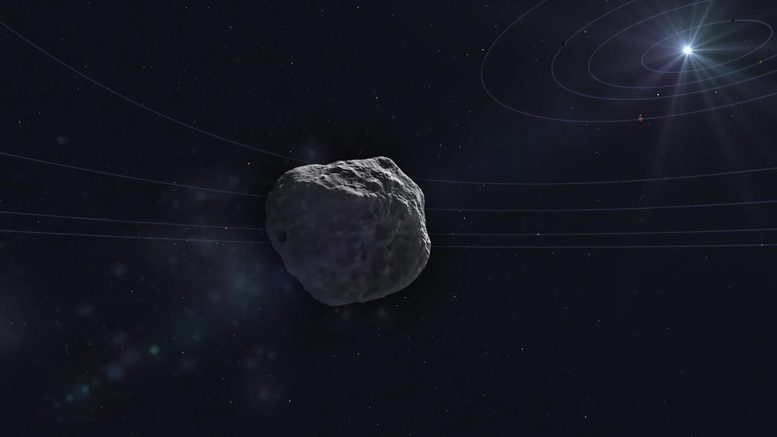
When amateur astronomer Gennady Borisov discovered an interstellar comet zipping through our solar system on August 30, 2019, scientists promptly turned their telescopes toward it hoping to catch a glimpse of this rare and ephemeral event. After all, no one had ever set eyes on a confirmed comet from a foreign star system, and it was clear from its projected trajectory that the alien visitor, named 2I/Borisov, would soon disappear from the sky forever.
Before it dimmed from view, a team of international scientists led by Martin Cordiner and Stefanie Milam at NASA’s Goddard Space Flight Center in Greenbelt, Maryland, probed it with the world’s most powerful radio telescope. The comet was near its closest approach to Earth at about 180 million miles, or nearly 300 million kilometers, away.
When the scientists peeked inside the halo of gas that formed around the comet as it came closer to the Sun and its ices began to vaporize, they detected something peculiar. 2I/Borisov was releasing gas with a greater concentration of carbon monoxide (CO) than anyone had detected in any comet at a similar distance from the Sun (within less than 186 million miles, or 300 million kilometers). 2I/Borisov’s CO concentration was estimated to be between nine and 26 times higher than that of the average solar system comet.
Until more interstellar comets are observed, this result raises more questions than it answers.
Read Unusual Secrets Revealed in Analysis of Mysterious Visitor From the Depths of Space for more on this research.
Reference: “Unusually high CO abundance of the first active interstellar comet” by M. A. Cordiner, S. N. Milam, N. Biver, D. Bockelée-Morvan, N. X. Roth, E. A. Bergin, E. Jehin, A. J. Remijan, S. B. Charnley, M. J. Mumma, J. Boissier, J. Crovisier, L. Paganini, Y.-J. Kuan and D. C. Lis, 20 April 2020, Nature Astronomy.
DOI: 10.1038/s41550-020-1087-2
Never miss a breakthrough: Join the SciTechDaily newsletter.